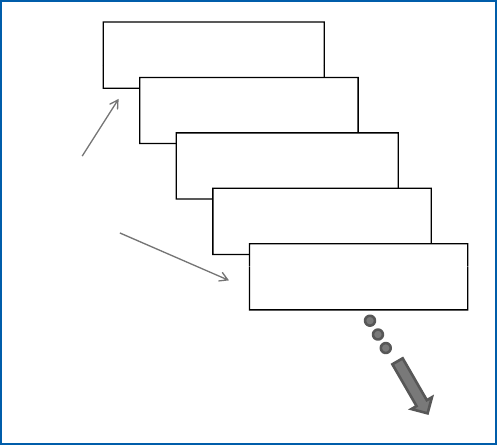Operating instructions

10 Choosing a Ham Radio
memoRies aNd VFos
Ads for radios tout the number of memory channels or memories—each can store
the complete radio configuration to access a favorite repeater or channel. Having lots of
memories means you can dedicate a group to your most-used repeaters and simplex chan-
nels while other groups can be used for channels you use for special events, training, and
vacation or travel.
How many do you really need? Start by making a list of all local and regional repeat-
ers and simplex channels on the bands covered by your radio. (A club or ARES team can
be quite helpful in making the list.) If your radio has wideband- or extended-receive, add
some AM and FM broadcast stations and the primary frequencies used by public safety
and service agencies in your area. Don’t forget the NOAA weather stations and if you are
near water, the common VHF marine channels. Increase that total by about one third and
you have a pretty good idea of how many memories you’ll need.
Some memory channels have special functions. Call channels provide easy recall of
your favorite channels. Scan control channels store frequency limits for scanning func-
tions, if your radio can act as a scanner.
The ability to receive on two channels at once (“dual receive”) is very useful. “Prior-
ity channel” and “Channel watch” monitor a channel for activity at all times and switch
to that channel when a signal is present. This is useful during emcomm and public service
activities or if you want to monitor a “home” repeater while operating elsewhere.
All radios have at least one VFO that tunes to any frequency the radio covers. VFOs
on FM-only radios usually tune in discrete steps
(e.g., every 2.5, 5 or 10 kHz) rather than continu-
ously. On radios with more than one VFO, each
can separately set the access tone, transmit offset,
and other operating parameters. Once a VFO
is configured, the information is transferred or
programmed into (stored in) a memory. VFOs can
act as temporary memories, too. A second VFO is
a “nice-to-have” for flexibility.
PRoGRammiNG memoRies
Look in the radio’s manual at the method used
to program the VFO’s information into a memory
channel. You may find that some methods are
easier to remember or perform. Some radios
may have a quick-program function that quickly
stores the VFO settings in an un-programmed
memory. Alphanumeric channel labels (such as
“CLB_RPT”) make it much easier to remember
which channel is which. (See the section on “Pro-
gramming and configuration software” for more
information.)
Digital modes
Exchanging text, email, graphics, and files is an important part of today’s emcomm
and other applications of radio. The modes that transmit and receive data are referred to
as digital modes. On VHF and UHF, the most common digital mode is packet radio or
“packet”. (tapr.org/packetradio.html) The name comes from data being transmitted in
groups of characters that are called packets. Packet is also known as AX.25, the designa-
tor of the technical standard that describes it. To use packet, you’ll need an FM radio, a
Figure4—Memory channelsormemories canstore
thecompleteradiocongurationtoaccessafavorite
repeaterorchannel.
Ch1 CLB.RPT
443 500
103 5
443
.
500
103
.
5
Ch2 CLB.SPX
147.520 - - - -
Ch3 TGR.MTN
145.350 179.5
Ch4 KIRO-AM
710 - - - -
Ch5 KPLU
-
FM
Memory
Channels
Ch5
KPLU
FM
88.5 - - - -
Figure4










